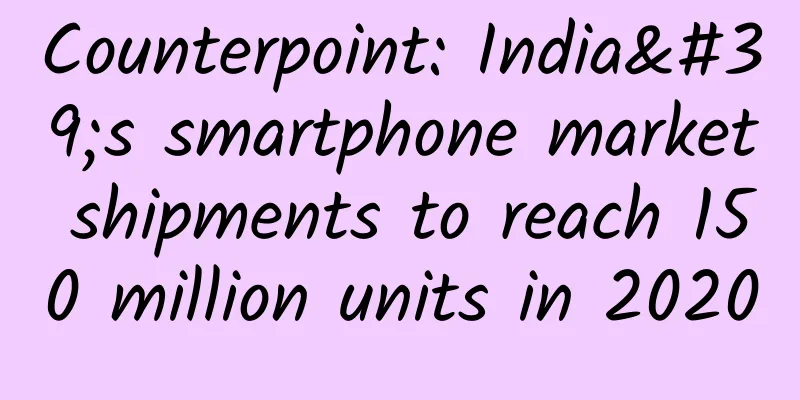Counterpoint: India's smartphone market shipments to reach 150 million units in 2020

The latest research from Counterpoint Market Monitor shows that the Indian smartphone market shipped 150 million units in 2020 , a slight year-on-year decrease of 4 %. After the lockdown, new application scenarios such as online learning and working from home have emerged, leading to a surge in market demand, and coupled with vigorous promotions through online channels, India has remained resilient during the epidemic. Prachir Singh, Senior Research Analyst , commented on the market dynamics, “ India’s smartphone market shipments hit a record high in the third quarter of 2020 and continued this growth momentum in the fourth quarter. In addition, the Diwali festival in mid- November also pushed up shipments in October . After the lockdown, many new application scenarios such as online teaching emerged, and content consumption continued to grow. As a result, India’s market shipments exceeded 150 million units in 2020. We believe that in the future, more consumers will transition from feature phones to smartphones, and as mobile phone prices continue to fall, market demand will further increase. ” Commenting on the competitive landscape and brand strategies, Shilpi Jain, research analyst, said, “ Anti-China sentiment in India had largely subsided by the end of the year, with Chinese brands holding 75 % of the market share. The COVID-19 pandemic has changed consumer spending habits, and leading manufacturers have adopted innovative channel strategies. Offline brands such as Samsung, vivo and OPPO have begun to increase their online business. Samsung launched the Galaxy F series on Flipkart and the Galaxy M series on Amazon . Xiaomi has adopted a minivan retail store ( Mi on Wheels ) strategy to drive sales in offline channels and remote areas. In addition, major brands have also launched innovative promotions and loyalty programs such as " smart upgrades " to retain and even expand their user base. At the end of 2020 , Indian brands began to rise, and Micromax launched the IN series of smartphones. Indian brands hope to increase their market share with the help of the PLI plan. ” The decline in feature phone shipments in 2020 led to a 9 % year-on-year decline in the Indian mobile phone market. The lockdown had the biggest impact on the feature phone market, so the segment plunged 20 % year-on-year. However, itel grew 26 % year-on-year in the feature phone segment , becoming the market leader in 2020 . Figure 1 : India’s smartphone market share in 2020 Note: Xiaomi’s share includes the Poco brand Figure 2 : India’s smartphone market share in the fourth quarter of 2020 Note: Xiaomi’s share includes the Poco brand
|
Recommend
Vulvar itching and bleeding
The genitals are a very important part of women. ...
Why is vaginal discharge green?
Under normal circumstances, women's leucorrhe...
What is the reason for the coffee-colored vaginal discharge?
Under normal circumstances, leucorrhea is milky w...
Research confirms: People who love picking their noses are more likely to suffer from Alzheimer's disease!
What happens to people who pick their noses for a...
Stomach pain ≠ gastritis! These symptoms may be early signs of gastric cancer
The full text is about 1,000 words, reading time:...
Vulvar tenderness is caused by these reasons
The vulva is a sensitive area. Toothache occurs b...
There are two ages most prone to "cliff-like aging". These habits that accelerate aging should be changed.
People usually do not age at a uniform rate, and ...
What are the main contents of breast biopsy?
Breast disease has always been a very common and ...
What is the reason for frequent urination in women
Many women have a secret that they cannot tell, w...
Breast pain when angry
Women pay more attention to emotional thinking, s...
What are the clinical manifestations of postpartum thyroiditis?
Postpartum thyroiditis is a relatively common phe...
What are the harms of smoking to women?
Nowadays, many women think smoking is a fashion, ...
What are the reasons why girls cannot get pregnant?
What many people dream of in their lifetime is to...
There are soybean-sized particles in the breasts during lactation
Breast health is an issue of great concern in tod...
Will I usually get constipated after having an abortion?
Many friends often have some health problems afte...









